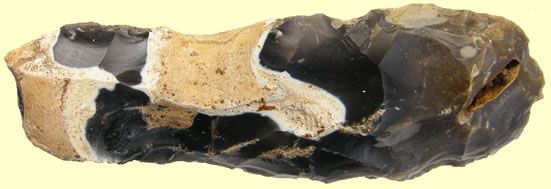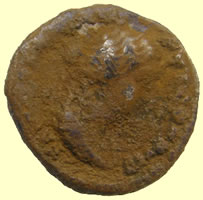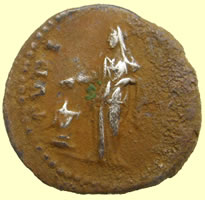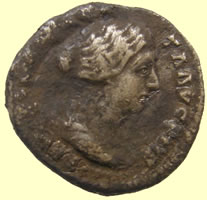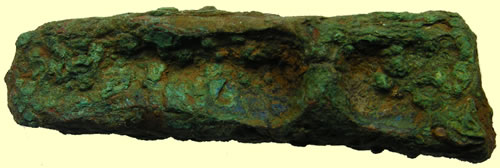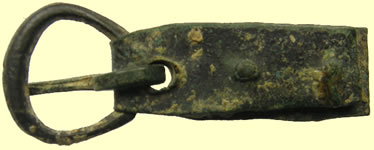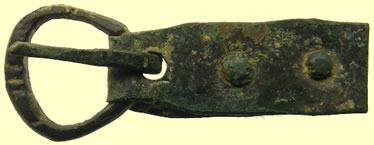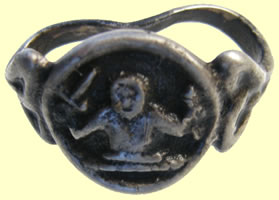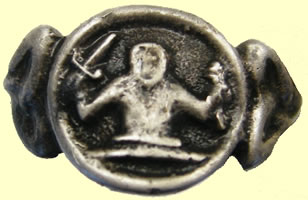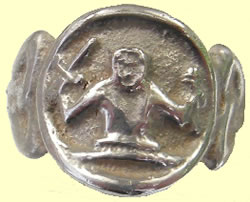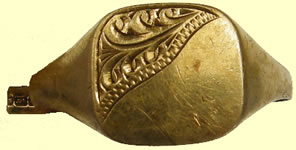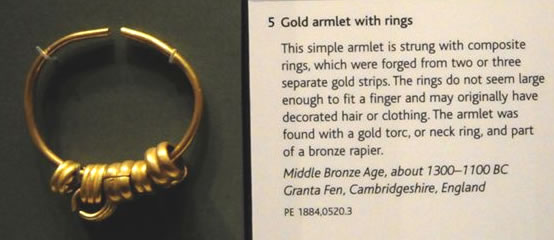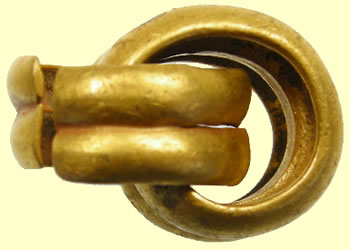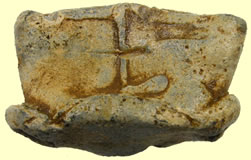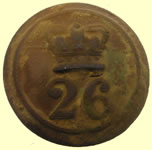

Metal detecting holidays in England with the World's most successful metal detecting club.
Twinned with Midwest Historical Research Society USA
| 2014 Feb finds page |
  |
|||
70 BC Morini boat tree Celtic gold qtr stater sent to CCI for recording and reported to museum as potential hoard 1.45g, 10.51mm |
|||
|
|||
| Huge 11,000 BC flint axe head 1660 mm L x 54.82mm W x 29.22 mm T |
|||
 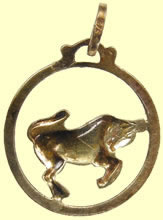 |
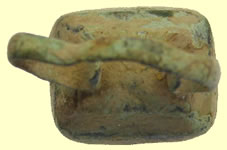 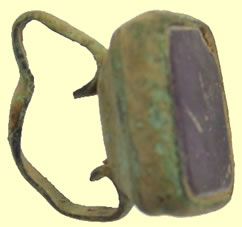 |
||
| 20thC Gold pendant marked .375 (9 carat) | Georgian blank fob seal | ||
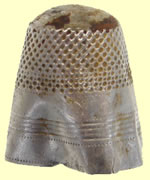 |
 |
 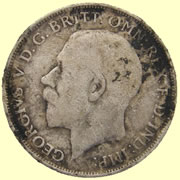 |
|
| Georgian silver thimble | 17thC button | 1921 George V milled silver florin (24 pence) | |
 |
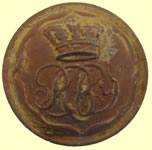 |
 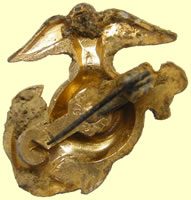 |
|
| The Glasgow Highlanders was a former Territorial Army (TA) regiment in the British Army, it eventually became part of The Highland Light Infantry (City of Glasgow Regiment) in 1881, | 19thC British Military button - not researched it yet | U.S. Marine Corps pin | |
  |
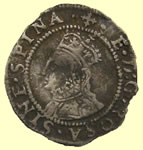  |
||
| 1816 George III milled silver sixpence | 1578-9 Elizabeth 1st hammered silver penny - Greek cross mint mark | ||
 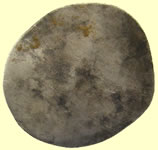 |
  |
||
Medieval hammered silver penny Quatrefoil with pellet at centre of reverse cross Rev CIVI/TAS/EBO/*** - York mint |
Alexander II 1214-49 Scottish hammered silver short cross half penny Obv WILLRLMUS REX Rev **** ON ROE - Roxburgh mint |
||
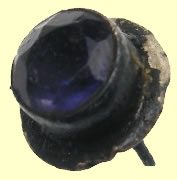 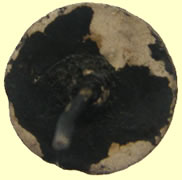 |
  |
||
| Victorian silver ear ring stud with blue stone | 17thC clothing fastener | ||
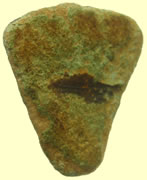 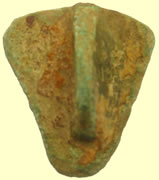 |
  |
||
| Medieval shield mount | 17thC clothing fastener | ||
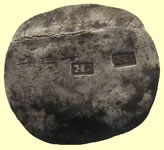  |
  |
||
| 17thC milled silver sixpence - over stamped love token | 1272 Edward 1st hammered silver penny - Class 10 Obv EDWAR ANGLE DNS HYB Rev CIVI/TAS/CAN/TOR - Canterbury mint |
||
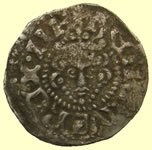 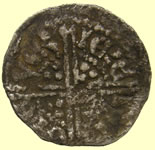 |
 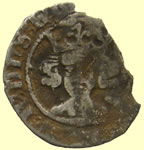 |
||
1247 Henry III hammered silver voided long cross penny Class IIIa Obv HENRICVS REX III Rev IERE/MIE/ONE/VER- Moneyer Jeremie of York mint |
Unknown Edward hammered silver penny - annulet stops both sides of DNS & R which is singled out. It does not appear to be a sterling imitation, Obv ***o R'o DNS o hYB ??? Rev CIVI/TAS/LON/DON - London mint |
||
  |
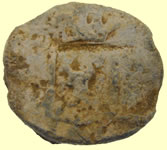 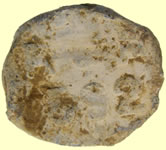 |
||
| Crown shaped glass stopper | 17thc Dutch lead bale seal | ||
2ndC Roman silver coin sent for ID - cooking to remove crust (Ed) - resent for update on ID We will need to see what appears on the obverse - particularly in the legend - before I can be completely certain who this is beyond "an Antonine woman". It's highly unlikely to be Faustina Sr. since the main body of her coinage is posthumous and the reverse type - PVDICITIA - would be a quality or virtue only of a living woman. I suspect Faustina Jr. for the following reasons: The shape of the head and the hair style seem to strongly suggest the Antonine era, and although it could be either Faustina Jr. (issued under Antoninus Pius or Marcus Aurelius), Lucilla or Crispina, the length of the obverse legend suggested under the encrustation is likely only on a coin of Faustina Jr. But we'll have to wait and see what the cooker reveals on the obverse. Mark Now that we can read (or at least puzzle-out) the obverse legend well enough to be certain that it reads: FAVSTINA AVGVS-TA AVG PII F = "Faustina, Augusta, Devoted Daughter of the Emperor" She was honored as Augusta in her own right when her mother died in 147, this was several years before before her husband, M. Aurelius was made Augustus (161). She married Marcus Aurelius in 145 and died a few years before him in 175. We can now be certain that this is a lifetime issue for Faustina Jr. which was issued by authority of her father, Antoninus Pius. This issue dates to 156-7 from the mint at Rome. This is an unusual form of obverse legend and is almost unique to this specific type, although this type is not considered particularly scarce. References include: RIC III 508a; RSC 184; BMC1092; and SRCV 4707. Mark
|
|||
  |
 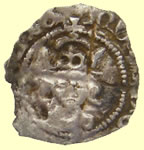 |
||
| 1916 George V milled silver shilling | 1509-26 Henry VIII hammered silver half penny - Cross fourchee , single arched crown Obv hE ****** Rev CIVI/TAS EBO/RACI - York mint |
||
 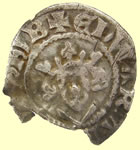 |
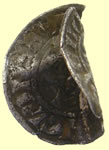  |
||
1272 Edward 1st hammered silver penny - Class 10 Obv EDWAR ANGLE DNS HYB Rev CIVI/TAS/LON/DON - London mint |
1327 Edward III hammered silver penny Obv EDWR ANGLE DNS HYB Rev CIVI/TAS/EBO/RACI - yORK mint |
||
 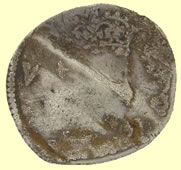 |
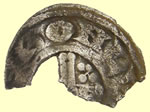 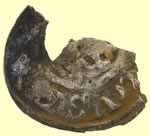 |
||
| 1604 James 1st hammered silver sixpence | Medieval hammered silver short corss half penny Obv *** CVS REX ** Rev ** R ON LV - London mint |
||
  |
  |
||
1793 Suffolk Sudbury Halfpenny Condor OBVERSE: Shield of Arms of Sudbury; dog, lion. MAY THE TRADE OF SUDBURY FLOURISH. REVERSE: PRO BONO PUBLICO 1793. EDGE: PAYABLE AT GOLDSMITH & SONS SUDBURY .XXX. |
1792 NORFOLK AND NORWICH HALFPENNY, PRO BONO PUBLICO MAY NORWICH FLOURISH (dot) Edge: PAYABLE AT N. BOLINGBROKES HABERDASHER &c NORWICH X as D&H 14 except no dash (-) in HABERDASHER | ||
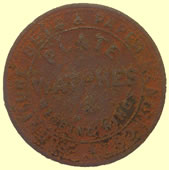 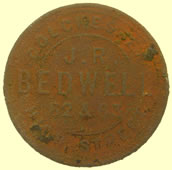 |
 |
||
19thC Colchester 'Bedwell' token - Hill Street |
Post Medieval cast copper alloy single loop buckle frame. 1500-1650 AD |
||
 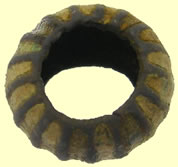 |
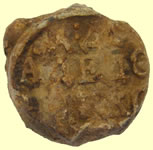 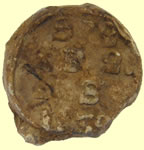 |
||
| Medieval knife pommel ring | Post medieval lead Russian bale seal | ||
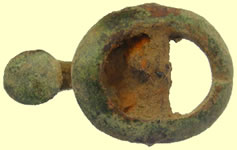 |
 |
 |
|
Post medieval cast copper alloy rectangular two piece buckle C1650-1725 |
Victorian mount | Medieval purse bar end | |
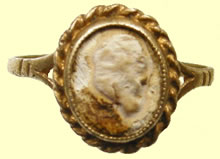  |
 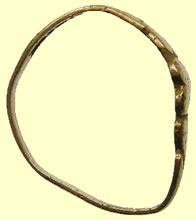 |
||
1980 London hall mark 9 carat gold ring Maker W&G 1.80g, 20.99mm |
1987 London hall mark 9 carat gold ring Maker SMC 0.99g 20.31mm |
||
|
|||
Bronze Age (c.1500-1400BC) cast copper alloy primary shield pattern palstave, dating to the Acton Park Phase 91.52mm L x 26.56 mm W |
|||
 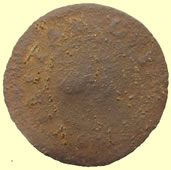 |
 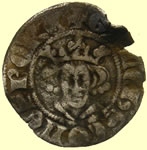 |
||
17thC Francis Lay of Coggeshall Essex hammered copper trade half penny - Obv THIS FOR/HALF /A PENY Rev Swan Issuer died at the The Swan Ref Norweb 1149 |
13thC Continental sterling imitation, researching type bv +GAM hSC ONE RORE Rev EVA/ Y.VE/NOE/*AN |
||
 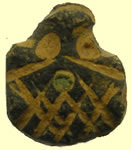 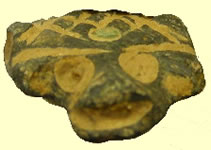 |
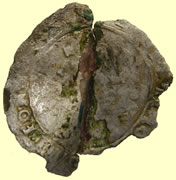 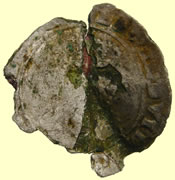 |
||
| Early medieval zoomorphic mount | 1547-53 Edward VI hammered silver sixpence forgery | ||
 |
 |
 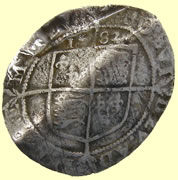 |
|
| 16thC Tudor button | 16thC Tudor button | 1582 Elizabeth 1st hammered silver sixpence | |
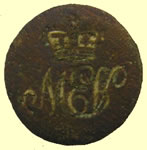 |
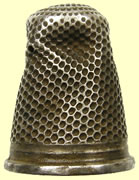 |
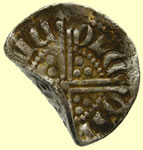 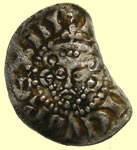 |
|
19thC military button MEF ? |
Georgian silver thimble | 1247 Henry III hammered silver voided long cross - Class IIIb Obv hENRICVS REX III Rev NIC/OLE/ON/LVD -Moneyer Nicole of London mint |
|
 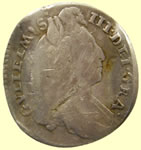 |
  |
||
| 1696 William III milled silver sixpence | 1247 Henry III hammered silver voided long cross Obv hENRICVS REX III Rev ND/hEN -Moneyer Henry of London mint |
||
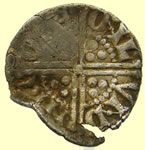 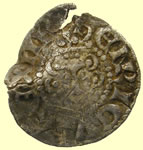 |
 |
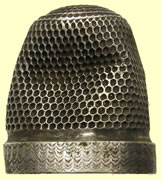 |
|
1247 Henry III hammered silver voided long cross - Class IIIb Obv hENRICVS REX III Rev NIC/OLE/ONL/LND -Moneyer Nicole of London mint |
1876-1894 Honour; if the head of a "blackamoor" or Moor, refers to deeds of prowess in the Crusades Livery button Firmin & Sons Ld |
Georgian silver thimble | |
 |
 |
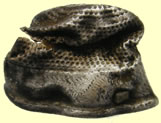 |
 |
| Eastern Railways button | Unknown | Georgian silver thimble | 15thC open topped thimble |
  |
 |
||
| Medieval shield mount | Georgian watch winders | ||
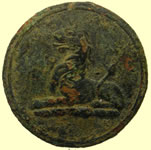 |
 |
|
|
| 19thC livery button | 1900 Generic Merchant Navy button | Medieval gilded hooked mount | |
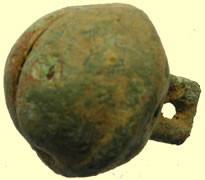 |
 |
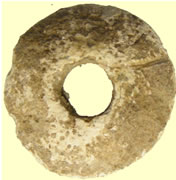 |
 |
| 18thC crotal bell | Post medieval lead hanging weight | Medieval lead spindle whorl | 1722 Phoenix Fire Office button |
  |
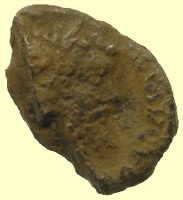 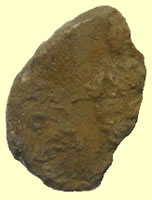 |
||
Roman bronze coin sent for ID The Æ is a Centenionalis or Majorina of Magnentius, a short-lived (350-353) contender for the Western territories formerly controlled by Constans, whom he chased into exile, waylaid along the way, then had killed. Magnentius' (and brother Decentius') coins are all from Western mints. This one appears to be from the mint at Trier. The reverse type here is the common VICTORIAE DD NN AVG ET CAES, 2 Victories holding wreath, which was both his and his brother Decentius' most-used reverse type. Your coin is a close match for this one in my collection: http://www.stoa.org/gallery/album167/29_Magnentius_2VIC_TRP You might recall a group of more than 10 similar coins of this Imperial pair which one of your boys found a couple years ago and which were eventually declared a hoard find. Today's find is in a lot better condition than most of those were, however - they evidently had been in the plowed layer of soil for quite some time and were mostly broken or badly chipped. The recently found specimen shows some post-strike damage, but is mostly whole. You can always tell Magnentius' and Decentius' coins by their jowly & chubby-cheeked portraits and the silly-looking "mullett"-style hairdos they both sported. Their coins also are generally larger than the prevalent circulating Æ's of that era - but you wouldn't have any way of knowing this given the mixed-era nature of your finds. The more typical Imperial-issue of the era was this ubiquitous "Æ3", FEL TEMP REPARATIO fallen horseman type: http://www.stoa.org/gallery/album167/44_Constantius_FTR_AQL_2 You don't seem to find these very often in your area, but they are, so far as I am aware, the single most common type of coin surviving from antiquity. I guess by the 350's, aside from issues by the more local "pretenders/usurpers" like Magnentius & Decentius, Britain was already beginning to get pretty short shrift in terms of the supply of new coin reaching the area from more central & Eastern areas of the Empire. Mark |
Roman silver coin fragment sent for ID The silver fragment is from a denarius of Septimius Severus, 193-210 AD. I can't tell from the remaining features what the reverse type may have been - and Sept. Sev. was a very prolific issuer of different reverse types on his denarii. Although the device might appear to be a highly unusual tubby personification, I think this is the result of encrustation appearing to be part of the relief. From the couple of letters visible at the lower left, it might be "PROVIDENTIA..." but generally a standing representation of Providence will be holding a wand and/or pointing at a globe at her feet. It's not impossible that this was what was originally happening on this coin's reverse, but it's one of those "best guess" situations at this point. |
||
|
|||
| Medieval buckle with plate | |||
 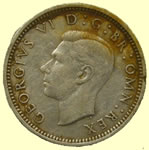 |
 |
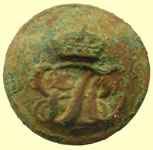 |
|
| 1942 George VI milled silver sixpence | MN - G & J Burns Ltd In use 1842 - 1922 | Unknown military button | |
 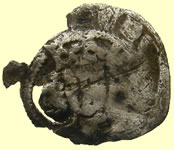 |
 |
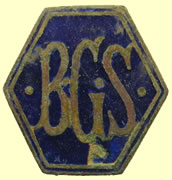 |
|
Medieval Edward hammered silver penny - quatrefoil at centre of reverse cross York mint |
18thC lead token | Bury Grammer Scool enamelled badge | |
  |
 |
 |
|
| 17thC knife pommel | Georgian watch winder | 17thC knife quillion | |
 |
 |
  |
|
| Quality copper seal | 1500-1700 mount | 2ndC Roman fibular brooch | |
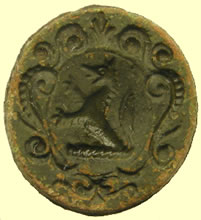  |
|||
| 17thC seal matrix | |||
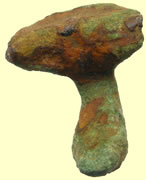 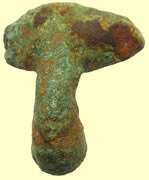 |
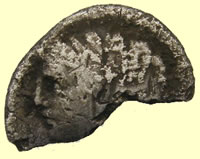 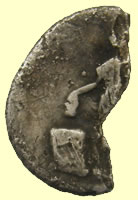 |
||
| 2ndC Roman fibular brooch | BC Republican silver coin sent for ID | ||
|
 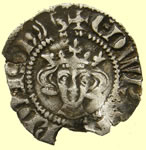 |
||
| Roman bronze dagger quillion | 1272 Edward 1st hammered silver penny - Cross potent - Class 1d - barred A Obv EDWR ANGLE DNS HYB Rev CIVI/TAS/LON/DON - London mint |
||
 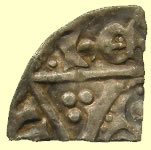 |
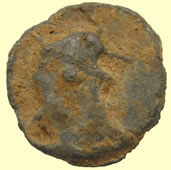 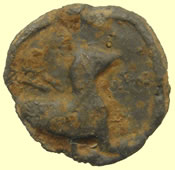 |
||
1247 Irish Henry III hammered silver voided penny Obv hENRICUS REX III Rev /DIV - Dublin mint |
Roman lead token | ||
  |
|||
| 1812 milled silver Bank Token - 3 shillings forgery | |||
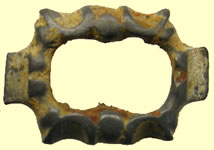 |
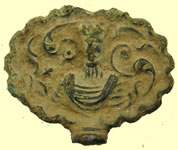 |
|
|
Cast copper alloy trapezoidal shoe or knee buckle with concave sides 1660-1720 |
Georgian watch winder | Unknow knopped medieval fitting | |
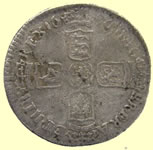  |
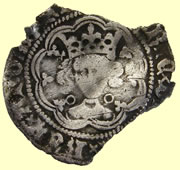 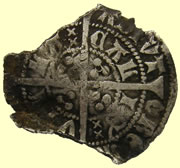 |
||
| 1696 William III milled silver sixpence | 1422 -27 Henry VI hammered silver groat (4 pence) obv HENRIC DI GRA x REX x ANGL Z FRANC DNS HYB rev outer legend - POSVI DEVM ADIVTORE MEVM inner legend VILLA CASLISIE - Calais Mint Annulet issue - annulets by neck and between two sets of opposing pellets |
||
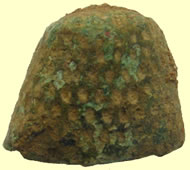 |
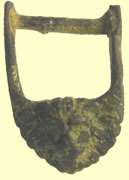 |
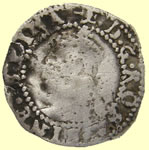 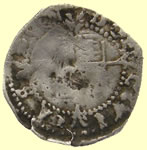 |
|
| 15thC thimble | 17thC buckle with face design | 1582 Elizabeth 1st hammered silver penny | |
  |
 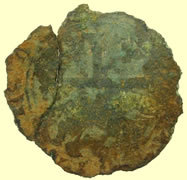 |
||
| 2ndC Roman fibular brooch | 1340 AD French Jetton Crown introduced in 1340 by Philip VI (1328-50) Royal Crown with 3 rosettes across body of crown |
||
  |
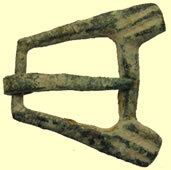 |
 |
|
| Medieval short cross hammered silver half penny | Early medieval buckle | 17thC sword belt fitting | |
 |
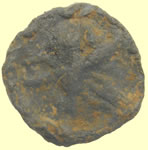 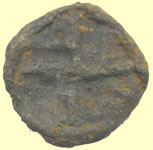 |
||
| York and Lancaster Regiment badge | Medieval lead token | ||
  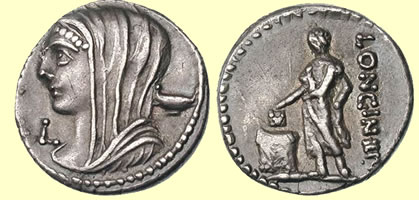 |
|||
63 BC Roman BC republican silver sent for ID Believe it or not, this is actually a pretty easy one to identify - mostly due to the fortuitous way it broke and what parts of the distinctive reverse device were left visible. This is a denarius of L. Cassius Longinus, 63 BC. The obverse is the veiled and diademed head of Vesta left. The reverse is really an interesting and important voting scene - "Togate citizen standing left depositing ballot inscribed "V" in voting box." Off flan to the right is the legend LONGIN III V vertically to the right of the standing figure. http://www.wildwinds.com/coins/sear5/s0364.html There are links to another dozen or so specimens of this type on the page to which the URL above links. Mark |
|||
 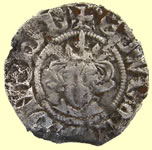 |
 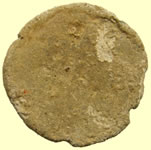 |
||
1344 Edward III hammered silver penny - Cross 1 (broken) Obv EDWR ANGLE DNS HYB Rev CIVI/TAS/LON/DON - London mint |
16thC Elizabethan illegal tavern lead token | ||
|
|||
Repaired 19thC silver livery ring Possible Murray clan ringHard to decipher what's in the left hand of the man, but everything else looks correct for a Scottish Clan named Murray. |
|||
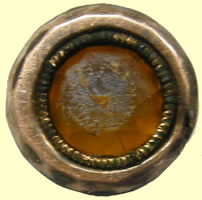 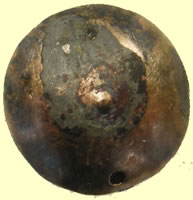 |
|||
Georgian rose gold button with stone 13mm dia, 1.54g |
|||
 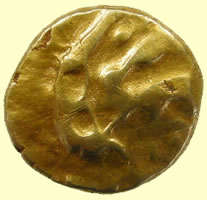 |
|||
| 70BC Celtic gold Morini qtr gold stater- sent to CCI for recording and reported as hoard addendum to museum | |||
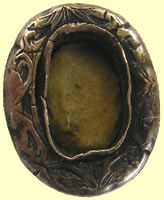 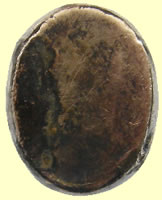 |
|
||
18thC rose gold ring top bezel - missing stone 0.62g, 11.65mm H |
1886 - 9 carat signet ring - Birmingham mint, circle M 1.61g, 11.68mm W
|
||
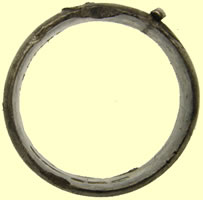  |
|||
| 1859 silver ring - Birmingham hall mark | |||
 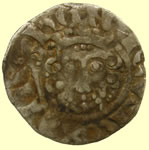 |
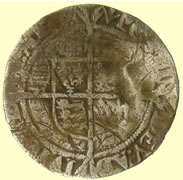 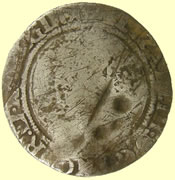 |
||
1247 Henry III hammered silver voided long cross penny - Class 5d Obv hENRICVS REX III Rev ROBERD ON CANT - Roberd of Canterbury mint |
1561-5 Elizabeth 1st hammered silver sixpence - Pheon mint mark | ||
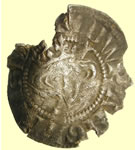 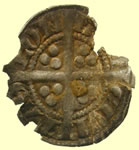 |
 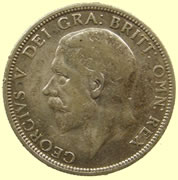 |
||
1344 Edward III hammered silver florin penny Obv EDWAR ANGLE DNS HYB Rev CIVI/TAS/LOND/DON London mint |
Almost mint 1929 George V milled silver florin (24 pence) | ||
Complete unit at the British museum
|
|||
Stunning pair of solid gold 1300 BC armlet rings - reported to museum as treasure 7.06g, 9.25mm W x 11..45mm dia |
|||
  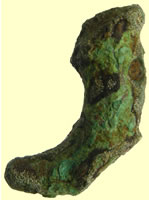 |
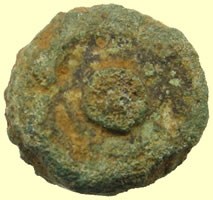  |
||
| 2nd C Roman trumpet brooch | Roman bronze mount | ||
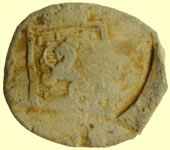 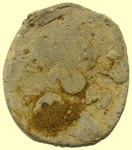 |
 |
 |
|
| 17thC Dutch lead bale seal | 19thC livery button | RN Flag Officer - 1827 In use 1827 - 1843 |
|
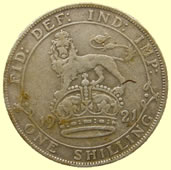  |
 |
 |
|
| 1921 George V milled silver shilling | 1500-1700 hooked mount | c1940 League of Ovaltinys The League of Ovaltineys (LoT) bronzed badge was the standard issue which all new members received from 1930-1950. Badge made by Butler, Birmingham. The LoT was founded in 1935 and proved to be a stroke of marketing genius for the company that produced Ovaltine, a malt-flavoured milk based drink. The club ran until the end of the 1950’s reaching a peak membership of over five million in 1939. The League was heavily supported by printed advertising, star celebrities and even had it’s own radio show broadcast by Radio Luxembourg on Sundays. The LoT also had their own theme song ‘We Are the Ovaltiney |
|
 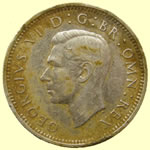 |
 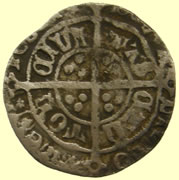 |
||
| 1939 George VI milled silver sixpence | 1493-5 Henry VII hammered silver half groat - rosette stops - Tun mint mark Rev CIVI/TAS/CAN/TOR - Canterbury mint |
||
 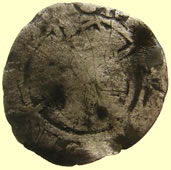 |
  |
||
| 16thC Elizabeth 1st hammered silver half groat | 1247 Henry III hammered silver coided long cross half penny Obv hENRICVS REX Rev - **** /RI0/NLV - Moneyer Henri of London mint |
||
 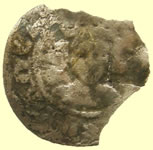 |
|
||
Medieval hammered silver penny - Quatrefoil with pellet in reverse cross - York Archiepiscopal Issue Obv *** ANGL** Rev /EBO - York mint |
Interesting early coin - checked my ref books and not a jetton as I first thought - needs more research Fist ever Crusader coin found here 1270 The Mahona, Lorenzo Giustiniani Banca (1483), Denaro, arms of Chios flanked by L and I, rev
|
||
 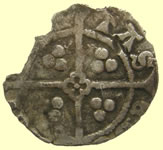 |
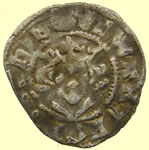 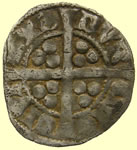 |
||
1369-1377 Edward III hammered silver penny - Post Treaty - Quatrefoil with pellet in reverse cross - York Archiepiscopal Issue - Cross on breast Obv EDWARD REX ANGLIE ET Rev TAS/EBO - York mint |
1272 Edward 1st hammered silver penny - Class 10 Obv EDWAR ANGLE DNS HYB Rev CIVI/TAS/DVR/EME - Durham mint |
||
 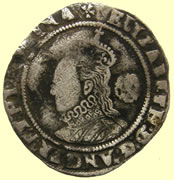 |
  |
||
| 1574 Elizabeth 1st hammered silver sixpence | 1910 Edward VII milled silver sixpence | ||
 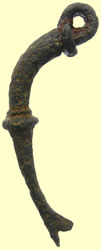 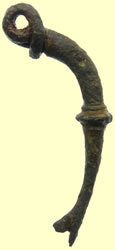 |
|||
| 1stC BC Roman European fibular brooch , Knotenfibeln | |||
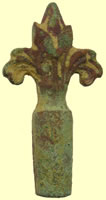 |
 |
 |
|
| Georgian copper stopper | Colchster Constabulary button | George V Royal Engineers button | |
|
|
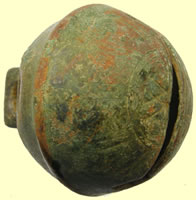 |
|
| 1640's Civil war lead gun powder measure and cap | 26th Regiment of Foot Officer - 1848-1853 |
Large cow bell William Gwynn 1770-1813 |
|
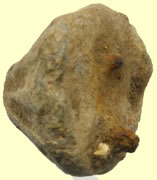 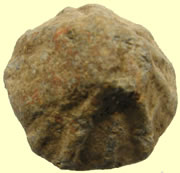 |
  |
||
| Medieval lead steelyard weight | 1835 USA Bust Half Dollar qtr | ||
  |
 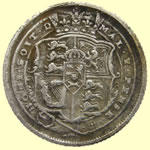 |
||
| 1846 Victoria milled silver sixpence | 1817 George III milled silver sixpence | ||
 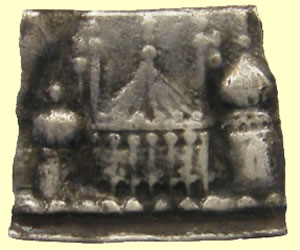 |
|||
Initially before I cleaned this token I thought of a 1640's Civil War siege token but this looks to be middle eastern in origin - sent of to the Fitzwilliam museum for their views, Crusades ? Could just be a fragment off a thimble ? 0.53g, 11.83mm x 14.02mm |
|||
 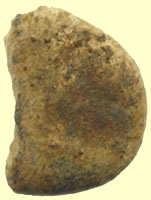 |
 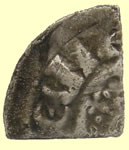 |
||
| Roman silver coin - cooking to remove crust | 1215 Henry III hammered silver short cross farthing Obv hENRICVS REX Rev LVN + London Mint |
||
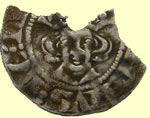 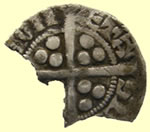 |
  |
||
Serian sterling imitation 1304 - 53 Valeran of Ligny hammered silver penny Obv INVS:DE:LIN Rev MON/ETA/SER/ |
Taco'd 1215 Henry III hammered silver short cross farthing Obv hENRICVS REX Rev ** MVEL. ON. CAN -Moneyer Samvel of Canterbury Mint |
||
 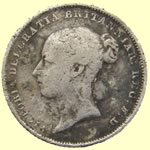 |
|||
| 1838 Victoria milled silver sixpence | |||
New finds page created 2014 March finds
|
|||
 |
|||

